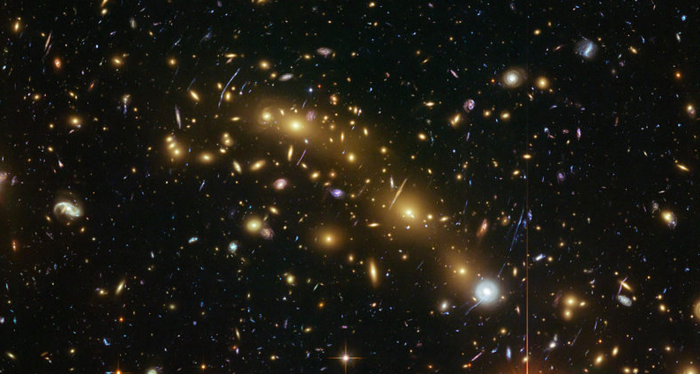LATEST RESULTS:
► Galaxy pre-processing in two z=0.4
CLASH-VLT clusters of galaxies (Olave-Rojas
et al. 2018):

Imaging and spectroscopic observations of two clusters of galaxies
at z=0.4 in the CLASH-VLT survey, MACSJ0416.1-2403 and
MACSJ1206.2-0847, are used to uncover their substructures and
study the properties of cluster members. The number of
substructure found in each cluster seems to correlate with their
dynamical state, in the sense that the cluster undergoing merging
(MACSJ0416) has a larger number of substrcutures. By using the
color distribution of galaxies, we are able to compute galaxy
fractions for red (passive), green (intermediate), and blue
(star-froming) members. These fractions are obtained as a function
of galaxy brightness (stellar mass) and distance from the center
of either cluster or substructure. Similar fractions are estimated
for a sample of coeval field galaxies. Our results show that,
beyond r200, substructures have a noticeable effect on
color fractions when compared with clusters, suggesting that the
quenching of the star formation in galaxies may have started in
group-sized halos, consistent with pre-processing.
► The quenching history of cluster galaxies in the EAGLE simulation
(Pallero et al. 2019):

In order to study the role played by the local environment in the
star-formation quenching of galaxies, we have explored the largest
of the EAGLE hydro-dynamical simulations trying to trace the
quenching history of galaxies in the 10 most massive clusters in
it. We follow the z=0 brightest cluster galaxy (BCG) since z=20
and we use its halo to define pre-processing. We consider galaxies
as pre-processed those that (a) suffered the strongest drop of
SSFR or (b) reached a SSFR value of 10-11
yr-1 in a halo different from that of the BCG at any
given redshift. In case (a), we observe that pre-processing occurs
at any redshift down to z=0, and that the strongest SSFR drop
takes place preferentially in dark matter halos of about
1011-1012 M☉. In case (b),
galaxies that reach the SSFR=10-11 yr-1
level do so preferentially in more massive halos of about
1013-1014 M☉. We conclude
that halo mass does play an important role in the quenching of
galaxies since an early epoch of cluster assembly.